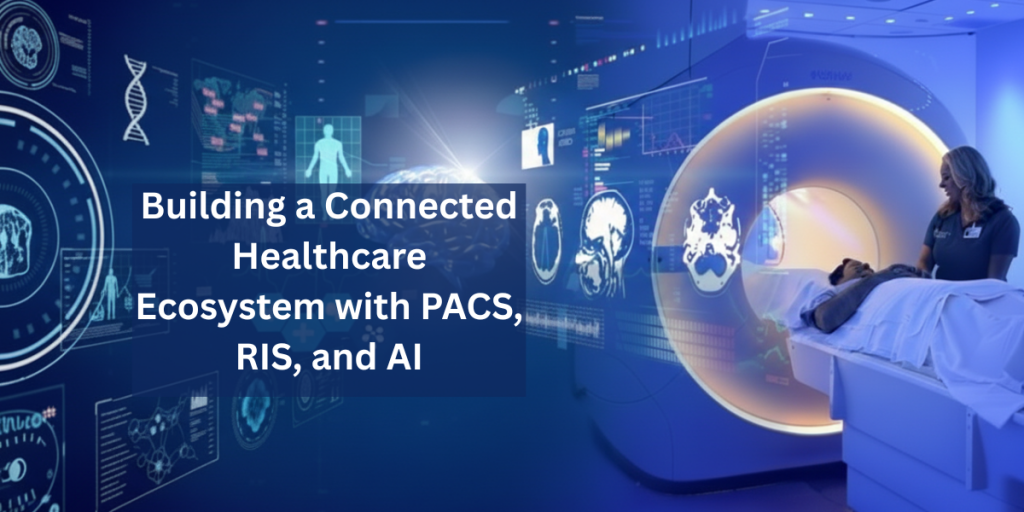The healthcare industry is undergoing a digital revolution. With the rise of advanced technologies, hospitals and clinics are moving towards connected ecosystems that enable seamless collaboration, better patient care, and optimized workflows. At the heart of this transformation are three powerful tools: Picture Archiving and Communication Systems (PACS), Radiology Information Systems (RIS), and Artificial Intelligence (AI). When combined, these technologies empower healthcare providers to deliver smarter, faster, and more efficient care.
Understanding the Core Components:-
PACS (Picture Archiving and Communication System):–
A digital platform for storing, retrieving, managing, and sharing medical images. It eliminates the need for physical films and makes imaging accessible across departments.
RIS (Radiology Information System):–
A specialized system that manages radiology workflows, including scheduling, patient tracking, reporting, and billing. It streamlines administrative and clinical processes in radiology departments.
AI (Artificial Intelligence):–
AI tools analyze medical images, detect patterns, and support clinicians in diagnosis. AI also enhances predictive analytics, automates repetitive tasks, and reduces human error.
Together, PACS, RIS, and AI form a powerful trio that creates a connected healthcare ecosystem where data flows seamlessly, decisions are faster, and care is more patient-centered.
Benefits of Integrating PACS, RIS, and AI:-
1. Seamless Data Flow:-
Integration ensures that patient data, imaging results, and reports are synchronized across systems. This eliminates duplicate entries and reduces the risk of errors.
2. Enhanced Diagnostic Accuracy:-
AI-driven tools assist radiologists in detecting abnormalities, measuring lesions, and comparing historical data. Combined with PACS and RIS, this results in more accurate and timely diagnoses.
3. Improved Workflow Efficiency:-
RIS manages scheduling and reporting, PACS provides instant access to images, and AI automates analysis. Together, they streamline workflows, reducing delays and boosting productivity.
4. Better Collaboration:-
Clinicians across departments can access imaging and reports from a unified system. Real-time collaboration improves communication between radiologists, physicians, and specialists.
5. Patient-Centered Care:-
With integrated systems, patients spend less time waiting for results. They also benefit from faster diagnoses, fewer repeat tests, and a smoother care journey.
6. Scalability and Future-Readiness
Cloud-enabled PACS and AI solutions ensure scalability, allowing hospitals to handle increasing patient volumes without heavy infrastructure investments.
The Future of Connected Healthcare:-
As AI continues to evolve, its role in healthcare ecosystems will expand. Future applications may include predictive diagnostics, automated reporting, and personalized treatment recommendations. Combined with PACS and RIS, AI will enable hospitals to provide proactive, data-driven care that improves outcomes and reduces costs.
Connected healthcare ecosystems are also essential for population health management. By analyzing large datasets, hospitals can identify trends, manage resources more effectively, and deliver preventive care
Conclusion:-
Building a connected healthcare ecosystem with PACS, RIS, and AI is not just about technology—it is about transforming the way care is delivered. By integrating imaging, workflows, and intelligent insights, hospitals can enhance efficiency, improve diagnostic accuracy, and create a patient-first environment.
For modern healthcare providers, the integration of PACS, RIS, and AI is no longer optional—it is a necessity for delivering high-quality, future-ready care.
.
